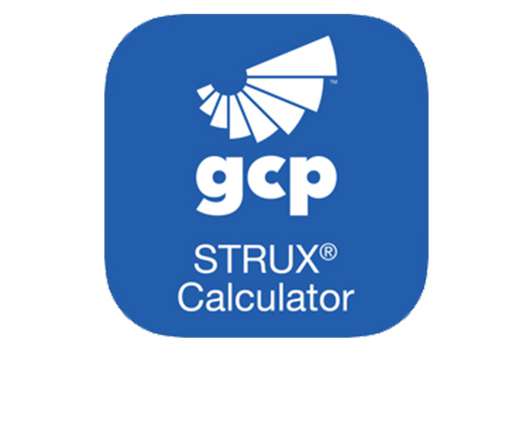Concrete calculator
GCP Applied Technologies
FEBRUARY 20, 2020
Concrete calculator. The STRUX® calculator recommends correct dosage rates, for STRUX® 90/40 macro synthetic fibers , as a steel welded wire mesh (WWM) replacement in concrete installations. Concrete admixtures. concrete admixture strux app icon blog hero. Concrete calculator for macro synthetic fibers.








































Let's personalize your content